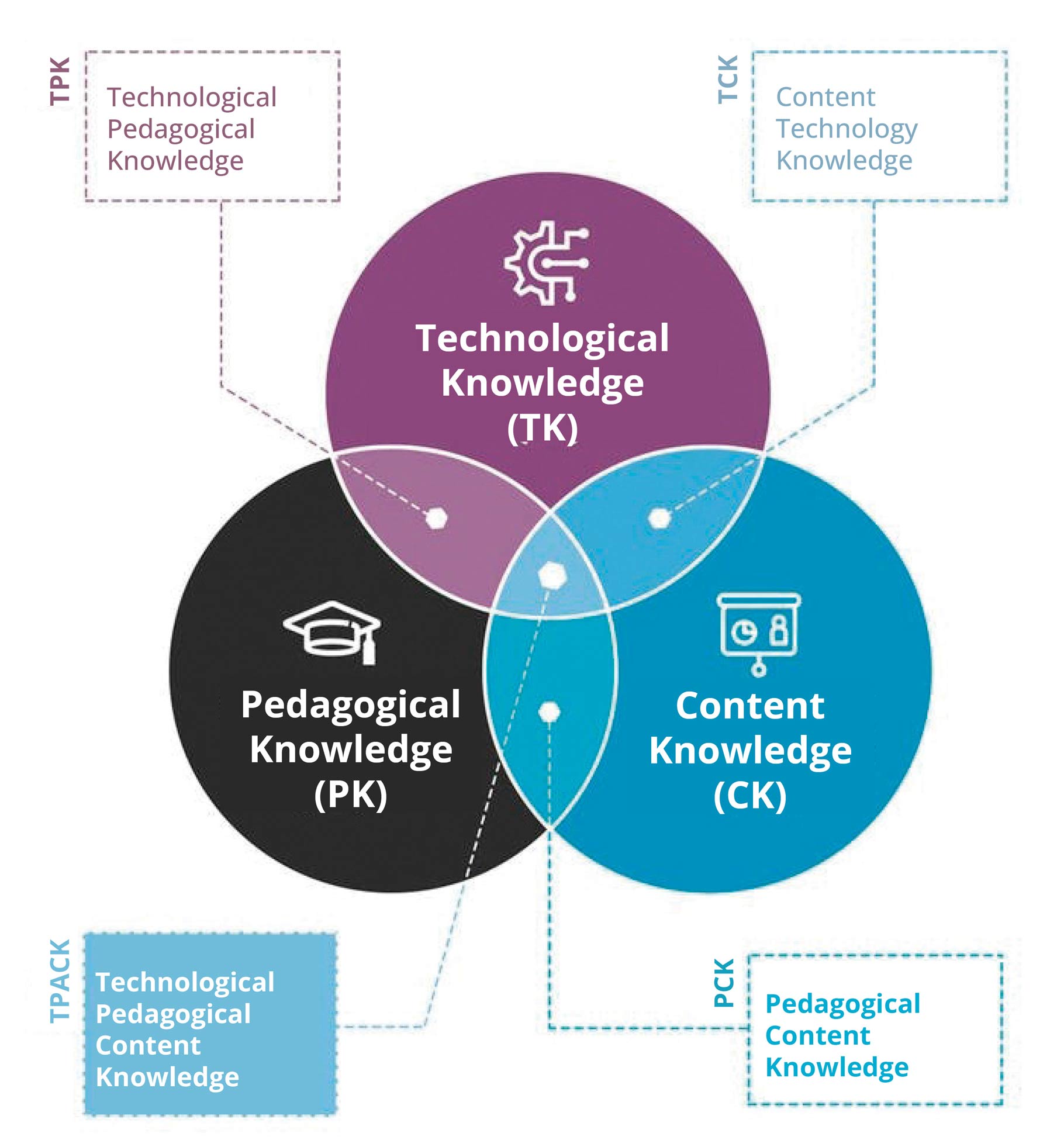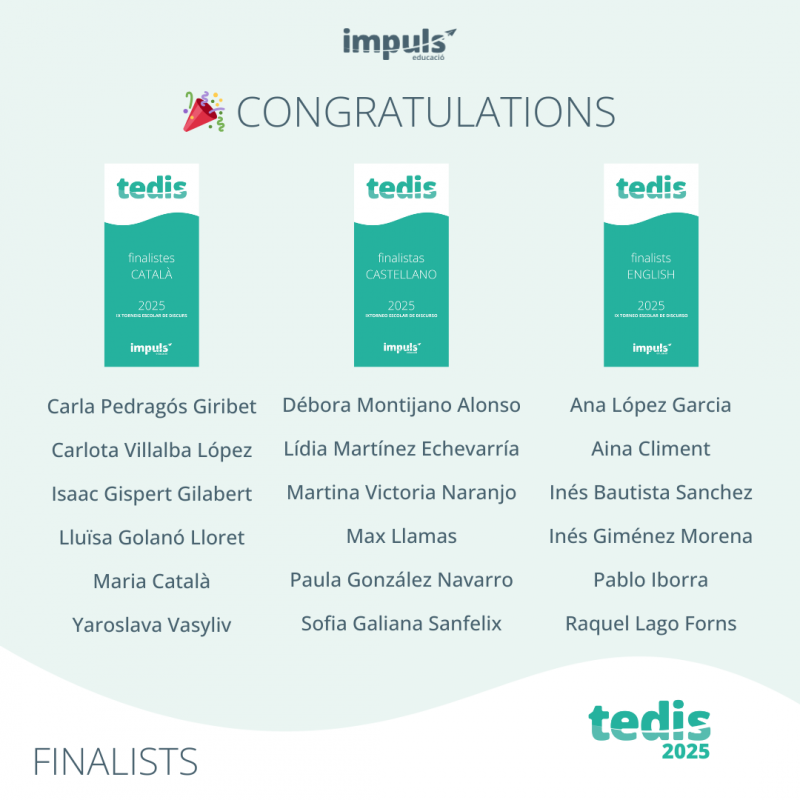by Estefanía Hita & Ana Moreno
Internationally, there are several widely accepted digital competence frameworks. They include the 2017 DigComp model (The Digital Competence Framework for Citizens – European Union); the ISTE standards (International Society for Technology in Education), also from 2017; and the UNESCO standards from 2019 (ITC Competency Framework for Teachers ITC-CFT). These three frameworks have a solid scientific grounding, are useful for guiding educational and digital certification policies and can be implemented through regional and national tools and training programmes. In addition, they provide a common language and approach, which helps with dialogue and the exchange of good practices among different educational communities.
However, according to Gros et al. (2020), numerous studies by UNESCO and the OECD, among other institutions, confirm that government policies to integrate ICT in schools have not met the expectations in terms of improving education in any country in the world.
Government policies to integrate ICT in schools have not met the expectations in any country in the world

In Spain, for example, in October 2017, the INTEF (Instituto Nacional de Tecnologías Educativas y de Formación del Profesorado) digital teaching competence standard was unveiled. It sought to support the digital transformation of schools through teacher training and accreditation as digitally competent teachers. INTEF is currently working on an update of its proposal with a strong commitment to the DigCompEdu model of the EU reference framework. This version is expected to be available by the end of 2022.
The ISTE model is in line with the SDGs
The ISTE Standards model (2017) is aligned with UNESCO’s Sustainable Development Goals and has been adopted by all 50 US states, as well as many other countries, mainly in the Americas, Asia and Oceania. As ISTE states on its website, its standards on digital competence are aimed at students, teachers and school leaders alike, backed by the fact that ‘for over 20 years the standards have been used, researched and updated to continuously reflect the latest research-based best practices that define success in using technology to learn, teach, lead and coach’. The ISTE (2021) proposal for students is comprised of the following seven dimensions: 1) Empowered learner; 2) Digital citizen; 3) Knowledge constructor; 4) Innovative designer; 5) Computational thinker; 6) Creative communicator; and 7) Global collaborator.

The ISTE proposal is comprised of seven dimensions such as: Empowered learner, Digital citizen or Global collaborator
The ICT-CFT framework is a useful tool for teacher training
UNESCO’s ICT Competency Framework for Teachers is framed within the 2030 Agenda for Sustainable Development and recognises that the rise of ICTs holds considerable potential for accelerating progress, bridging the digital divide, and promoting the development of inclusive knowledge societies based on human rights, empowerment and the achievement of gender equality. For UNESCO, the development of inclusive societies in the digital age involves four pillars: freedom of expression and freedom of information; universal access to information and knowledge; quality learning for everyone; and respect for linguistic and cultural diversity. The ICT-CFT Framework is a tool to guide the pre-service and in-service training of teachers in the use of ICT throughout the education system. It is designed to adapt to national and institutional objectives and updated to recent technological advances in education and learning, such as artificial intelligence (AI), mobile technologies, the Internet of Things, and open educational resources, to support the creation of inclusive knowledge societies.
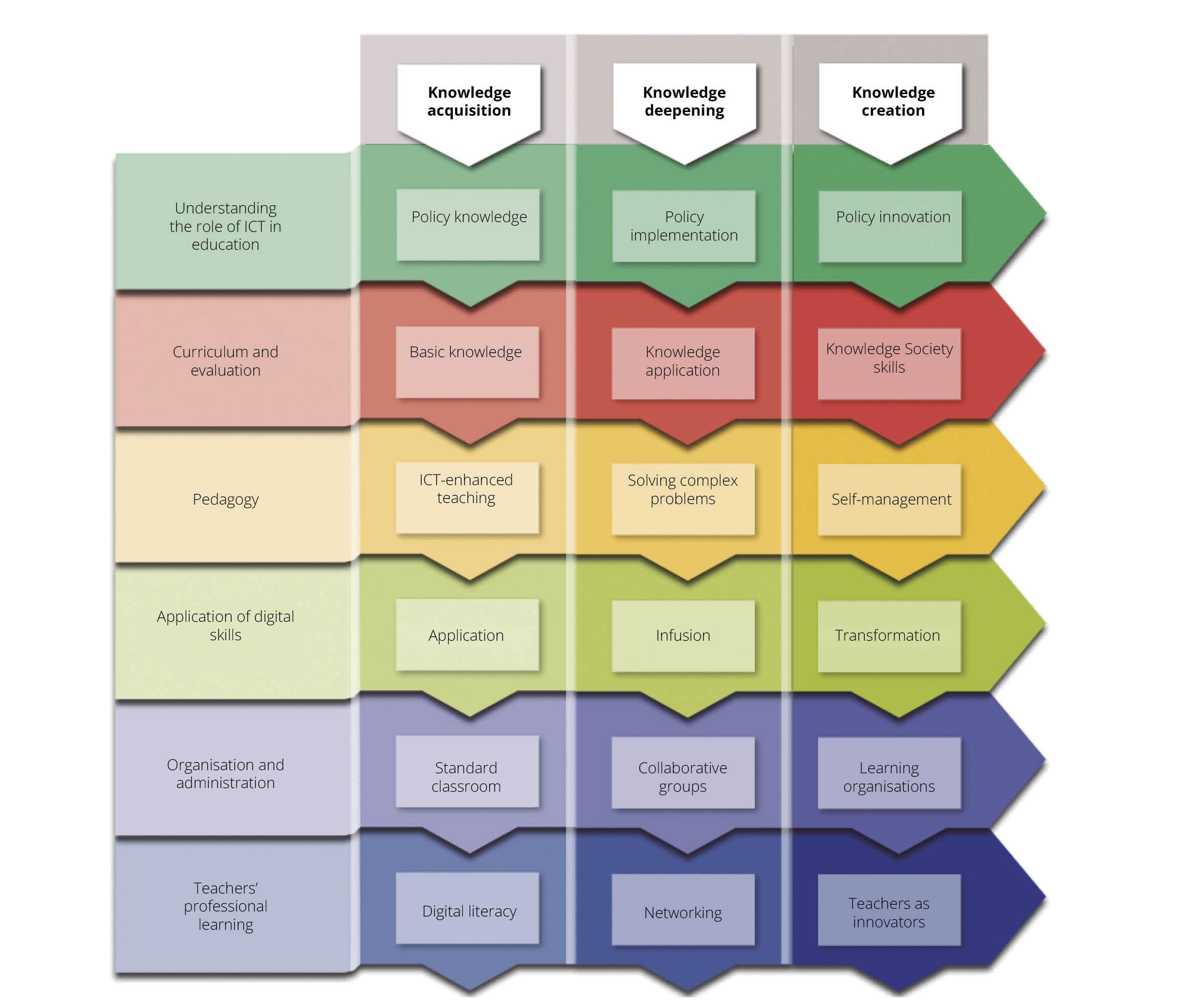
The EU DigComp model
The EU DigComp framework for digital competence includes three sets of competences: the Digital Competence Framework for Citizens (DigComp), the Digital Competence Framework for Educators (DigCompEdu) and the European Framework for Digitally Competent Educational Organisations (DigCompOrg). The first set encompasses the skills that every citizen should possess in order to enjoy a full life in a world where digital technology is omnipresent and necessary in almost all areas. The digital citizenship competence is crucial to the effective digital literacy not only of students but also of teachers, who must be role models for their students in the use of technology and actively participate in the digital society. This competence is organised into five dimensions and 21 competences. These 5 dimensions are: 1) Information and information literacy; 2) Communication and collaboration; 3) Digital content creation; 4) Security; and 5) Problem-solving.
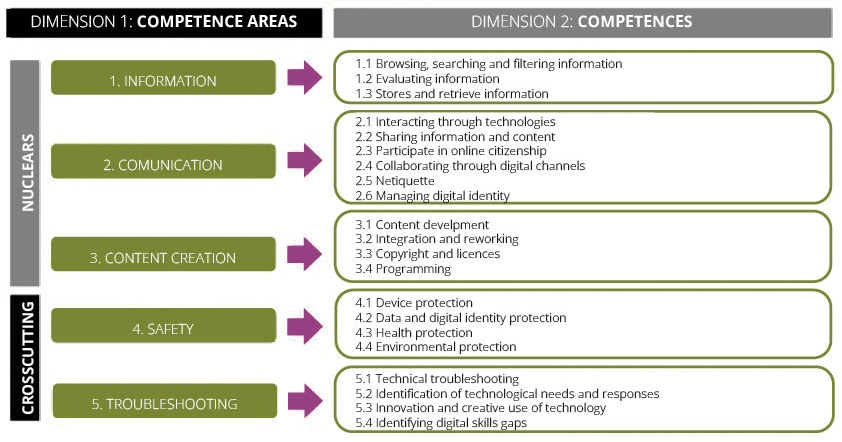
Digital technologies are part of a transversal competence in the curriculum
From the standpoint of twenty-first century school, this facilitates the integration of digital competences as specific, cross-curricular competence-based content at the curricular level when used as a tool to better understand the world and acquire the knowledge, skills and attitudes needed to achieve deep competence learning.
But rapid technological progress requires periodic revisions of these regulatory competence frameworks. Since the first version of DigComp in 2017, emerging technologies such as Artificial Intelligence (AI), virtual and augmented reality, robotics, the Internet of Things (IoT), datafication and new phenomena such as disinformation and misinformation have emerged. This new digital reality increases the requirements for the digital citizenship competence. In addition, there has been a growing need to address the ecological and sustainability aspects of interaction with digital technologies. The latest available version of DigComp is 2.2, and in addition to the new features mentioned above, it also incorporates pedagogical improvements such as the incorporation of three components of competence development that will facilitate its usefulness: knowledge, skills and attitudes. This time, DigComp has partnered with international organisations such as the ILO (International Labour Organization), UNESCO, UNICEF and the World Bank, whose support signals a step forward in a greater recognition and success of the European digital competence framework (Vuorikari, 2022).
There has been a growing need to address the ecological and sustainability aspects of interaction with digital technologies

As Hepp, Prats and Holgado (2015) state, there are many teachers who may not have broad knowledge of ICT, but do have a great deal of pedagogical knowledge and dare to propose activities or strategies that have a high technical level, which justifies them leading change processes in schools. However, both the widespread presence of digital devices and the duty to help learners become digitally competent require educators to develop their own digital competences. In the EU, DigCompEdu offers a set of 22 digital competences, organised into six areas and geared at training teachers to harness the potential of digital technology to improve and innovate in education. Three if the areas refer to pedagogical digital competences such as: selecting, creating and sharing digital resources; using digital technology in the teaching-learning process; improving assessment, inclusion, and personalisation; and actively engaging learners. The other two refer to the teacher’s professional environment, such as digital interaction with other professionals, students or families. The last one refers to specific pedagogical competences needed to develop their students’ digital competence, such as ‘enabling students to use technologies creatively and responsibly to manage information, communicate, create content, achieve wellbeing and solve problems’. (Redecker, 2020).

Figure 3. Competence areas, competences and competence relations of the European Digital Competence Framework for Educators, DigCompEdu. Image by JRC
The SELFIE tool is useful for teachers’ digital self-evaluation
The DigCompEdu framework is aimed at educators at all levels, from early childhood to higher and adult education, including vocational training, special needs education and any other non-formal learning context.
In December 2020, the DigCompEdu project presented the first version of the SELFIE self-assessment tool for teachers. This application allows teachers to reflect on their digital competence within the European framework. Each teacher can identify their strengths and weaknesses in order to design a custom learning plan and thus improve in the use of digital technology for effective teaching and learning in the twenty-first century. After a few years of testing with teachers in several countries, in December 2021 DigCompEdu launched its first version of SELFIE, which is now available in more than 30 languages.
An alternative model: Castañeda’s holistic model
Nonetheless, as Area and Adell (2021) mention, there are other approaches that question this behavioural approach. In the opinion of Castañeda et al. (2018), this type of classification of teachers’ digital competences is not based on the teacher’s actions and thus reduces teachers to mere users of technology, with a vision that is instrumentalist and value-neutral, and with a deterministic conception of the relationship between technology and society. Instead, Castañeda et al. (2018) propose the ‘holistic model geared towards the digital world’ in which the teacher: 1) is an expert in digital pedagogical content; 2) is a generator-manager of emerging pedagogical practices; 3) is able to use ICT to expand their relationship with the family and the student’s milieu; 4) is sensitive to the use of technology from the perspective of social commitment; 5) is an expert in enriched learning environments; and 6) has augmented practice-reflection. On the other hand, one of the eight principles for the design of digital education policies in the report ‘Digital Education Policies in Europe and Beyond: Key Design Principles for More Effective Policies’ (Conrads et al. 2017) rightly recommends ‘following a holistic approach targeting systemic change’ to favour in-depth transformation through a sustainable approach, building capacity, resources and local applications.
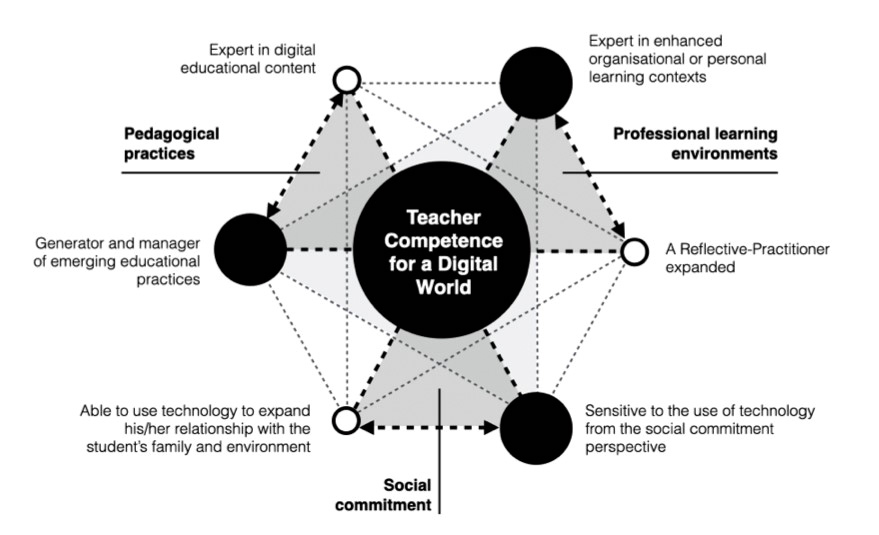
In this sense, another technological-pedagogical model that has quickly become a reference for teachers who wish to integrate ICT effectively into teaching and learning processes is TPACK. This model (meaning ‘technological pedagogical content knowledge’) suggested by Koehler and Mishra (2006) refers to three types of knowledge: pedagogical, technological and content. The three combined allow teachers to integrate technology into the teaching process to promote autonomous and deep learning in their students. It is a model worth consideration by institutions and teachers when planning and organising educational experiences, as it has the potential to improve teaching and learning (Salas-Rueda, 2018).
